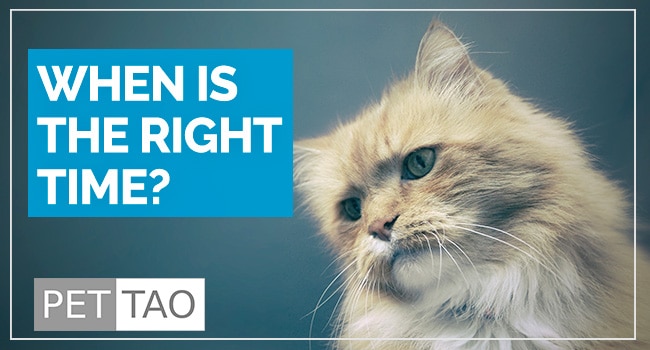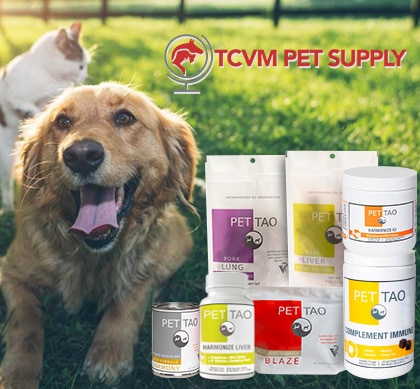Kidney failure in cats can often be managed for a period with treatments that prolong life and enhance comfort. Unfortunately, there will come a point when those treatments are no longer enough, and you may be faced with the heartbreaking decision of having to let your cat go.
The choice of euthanasia is always deeply personal. Deciding if—and later, when—to euthanize a beloved companion is one of the most challenging responsibilities a pet parent may face. The end of a pet’s life is filled with emotion, which can make transparent decision-making hard. Planning, when you are calmer and more grounded, can ease doubt and help prevent feelings of guilt or regret later.
By making the decision earlier, you also open up more options, such as arranging for a peaceful euthanasia at home surrounded by familiar comforts. From a Traditional Chinese Veterinary Medicine (TCVM) perspective, the final stage of kidney failure reflects the exhaustion of Kidney Qi, Yin, and Essence. Supporting your cat with gentle care, hydration, and soothing therapies may bring comfort, but eventually, the imbalance becomes too great for the body to recover.
Understanding the signs and symptoms of end-stage kidney failure can help you recognize when your cat is nearing transition and ensure you provide the most loving and compassionate support possible.
Symptoms of the Final Stages of Kidney Failure in Cats
The most common symptoms:
- Hiding
- Anemia
- Sudden weight gain or loss
- Mental confusion
- Heart failure
- Twitching
- Restlessness
- Dull, sunken eyes
- Seizures
- Inability to walk
- Blindness
- Body odor
- Refusal to eat
- Incontinence
- Very bad breath
- Reduced or no urination
- Low potassium levels, high phosphorus levels, and very high urea and creatinine levels
Cats may experience many of the same symptoms throughout each progressive stage of kidney failure, but as the disease advances, these signs become more severe and complex to manage. Kidney disease is typically classified into four stages, with symptoms escalating in both frequency and intensity as the condition worsens. Watching your beloved companion decline can be heartbreaking, and at times, intolerable.
Stages of Feline Kidney Failure
Below is a review of the four stages of feline kidney failure.
Stage I – Early/Mild
Western Signs:
- Increased thirst
- Slightly increased urination
- Mild weight loss
- Subtle changes in appetite
TCVM View:
- Early depletion of Kidney Yin
- Slight imbalance of fluids (Jin-Ye)
- Qi is still strong enough to maintain function
Stage II – Moderate
Western Signs:
- Noticeable weight loss
- Decreased appetite
- Vomiting occasionally
- Dull coat or poor grooming habits
TCVM View:
- Yin deficiency deepens, leading to Empty Heat (restlessness, warm-seeking behavior)
- Qi stagnation may impair digestion and cause nausea
- Essence (Jing) begins to weaken
Stage III – Advanced
Western Signs:
- Significant weight loss and muscle wasting
- More frequent vomiting
- Dehydration despite increased water intake
- Lethargy, weakness in the hind limbs
- Bad breath (uremic odor)
TCVM View:
- Kidney Yin and Jing are significantly depleted
- Qi is weak, leading to fatigue and weakness
- Shen (Spirit) may appear unsettled—restlessness, anxiety, or disconnection
Stage IV – End-Stage
Western Signs:
- Severe weight loss, near emaciation
- Inappetence or complete refusal to eat
- Ulcers in the mouth, drooling
- Seizures or collapse
- Extreme lethargy, near-comatose state
TCVM View:
- Collapse of Kidney Yin, Jing, and Qi
- Yang may become deficient as the body loses all warmth and energy
- Shen becomes clouded—disorientation, unresponsiveness, detachment from surroundings
- The body is no longer able to maintain balance, signaling the transition toward death
It’s important to remember that symptoms alone do not always signal it is time to let go. In some cases, cats that appear to be near death can rally with proper treatment, regaining strength and stability. Interventions such as extended IV therapy, subcutaneous fluids, and tailored dietary adjustments may lead to a meaningful improvement. From a Traditional Chinese Veterinary Medicine (TCVM) perspective, these therapies help restore hydration, nourish Yin, and support the flow of Qi—temporarily rebalancing the body and easing discomfort.
Your veterinarian plays an essential role in this process. Ongoing follow-up blood work is the best way to assess whether treatments are improving kidney function and sustaining quality of life. When test results show little or no progress, and your cat continues to decline despite supportive care, it may be time to begin preparing emotionally and practically for the end of life.
Reaching this stage is not about giving up; it’s about perseverance. It’s about shifting your focus to comfort, dignity, and peace. By surrounding your cat with love and gentle care, you ensure their final days are filled with safety, warmth, and support.
Deciding to Euthanize Your Cat is Personal
If you’ve seen your cat’s condition steadily decline and blood work shows no improvement, it may be time to face the difficult decision of euthanasia. Questions such as “How much suffering is too much?” naturally weigh heavily on your heart.
Because you know your cat better than anyone, you are the best judge of their quality of life. Your veterinarian will provide the clinical perspective and guidance, helping you understand what your cat is experiencing physically. Don’t be afraid to ask your vet what they would do in your place—it can offer valuable insight. Still, a good veterinarian will remind you that the decision is always yours to make.
Some cats may pass peacefully on their own, but many do not. The final days of kidney failure can be painful and distressing, both for your cat and for you. If a decision hasn’t been made in advance, the signs may become clear, and you may realize that euthanasia is the most compassionate and loving gift you can give.
Euthanasia and Renal Failure: Knowing When Your Cat is Ready to Go
How renal failure affects your cat will play a significant role in your decision about euthanasia. Sadly, not all cats respond well to treatment, and most pet parents cannot bear to watch their beloved companion suffer. The question becomes: How much suffering is too much?
Only you can answer this, as you know your cat best. Your veterinarian will provide the clinical perspective and guidance, but ultimately, the decision is deeply personal. What often makes the process confusing is the unpredictable nature of kidney failure. At times, your cat may appear close to death, yet with the proper treatment, may rally and regain strength for a while.
If you are financially able to pursue every medical option and your cat still fails to respond, euthanasia may become the most compassionate and loving gift you can offer.
Signs your cat is responding well to treatment include:
- Maintaining a good appetite
- Showing normal personality and behavior
- Having strength and stamina
- Minimal weight loss
Signs your cat may not be responding to treatment include:
- Hiding or acting unusually, sometimes with mental confusion
- Sudden weight loss and loss of energy
- Dull, sunken eyes or blindness
- Refusal to eat, often accompanied by very bad breath
Blood work may also reveal low potassium, high phosphorus, and highly elevated BUN and creatinine levels. Still, it’s essential not to base your decision solely on lab results. Focus primarily on your cat’s behavior, comfort, and physical condition.
Every cat is unique. With a thorough treatment plan, attentive monitoring, and loving care, many cats can live fulfilling lives for months or even years after diagnosis—especially when the disease is caught early and managed carefully.
Powerful Tools for Cat Renal Failure Challenges
There are several quick and easy changes you can make at home to help your cat overcome the challenges of kidney disease and renal failure.
- Learn more about cat renal failure.
- Ask your vet about Epakitin. Epakitin is a chitosan-based supplement that helps support the filtering function that your cat’s kidneys can no longer perform.
- Home-cook for your pet. Visit our slow-cooker recipe page and try one of our cat food recipes designed for cats with kidney disease or renal failure. Please consult your holistic veterinarian first.
- Learn more about TCVM Herbal Remedies. Chinese medicine offers many exceptional natural solutions for dog allergies. Some good examples are:
Get A Phone Consultation with One of Our TCVM Veterinarians








